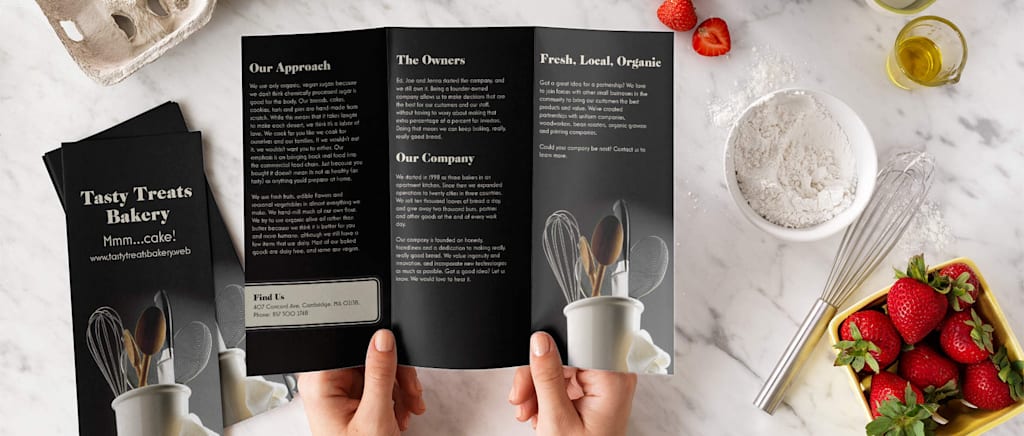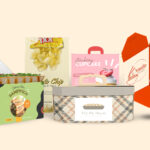In today’s dynamic marketing landscape, branding through brochures remains an effective and essential strategy for many businesses. Brochures serve as tangible assets that communicate a brand’s identity, values, and offerings in an impactful way. As businesses strive to establish strong connections with their audience, understanding how to effectively leverage brochures can make a significant difference.
Marketing professionals recognize the potential of branding through brochures to create lasting impressions. Not only do brochures offer a physical representation of a brand, but they also work as versatile tools that can be used in a variety of settings. From trade shows to direct mail campaigns, the strategic use of brochures continues to be relevant in ensuring brand visibility and recognition.

The Importance of Brochures in Branding
Brochures are strategic marketing materials that encapsulate the essence of a brand. They convey detailed information about products or services while subtly reinforcing the brand identity through design elements. In a world where digital marketing prevails, brochures offer a tactile experience that is often more memorable.
The Role of Brochures in Marketing
Brochures play a pivotal role in marketing strategies by providing a concise yet comprehensive overview of a brand’s offerings. They are instrumental in reinforcing brand messaging and ensuring consistent communication across all marketing channels. When designed effectively, brochures can captivate potential customers and encourage them to engage with the brand further.
Creating a Lasting Impression
Brochures are invaluable for their high impact and ability to create lasting impressions. The distribution of well-crafted brochures can lead to elevated brand awareness and customer loyalty. To achieve this, businesses must focus on both the content and aesthetic appeal of their brochures.
Types of Brochures and Their Benefits
There are several types of brochures each serving a unique purpose in branding efforts. Some common types include the bi-fold, tri-fold, and Z-fold brochures.
Bi-Fold Brochures
Bi-fold brochures are one of the most popular formats. They are straightforward, providing ample space for images and text. These brochures are particularly favored for their elegance and simplicity, making them ideal for sharing detailed information.
Tri-Fold Brochures
Tri-fold brochures provide a compact format with multiple panels, offering structured information dissemination. The additional folds allow for a creative layout, enabling marketers to present information in a step-by-step manner. This type enhances storytelling capabilities, which is crucial for captivating audience interest.
Z-Fold Brochures
Z-fold brochures stand out for their distinctive shape and unique unfolding experience, which immediately captures attention. They offer great versatility and can be utilized effectively for a variety of purposes, such as menu cards, event programs, or detailed product guides.
Designing Effective Brochures for Branding
The design of a brochure plays a critical role in brand perception. Attention to aesthetics, layout, and content can lead to high engagement and retention.
Choosing the Right Colors and Fonts
Colors and fonts are essential design elements that should align with the overall brand identity. Consistency in color palettes and typography reinforces brand recognition and helps maintain a cohesive look across all marketing materials.
Incorporating Visuals and Graphics
Visuals and graphics have the power to evoke emotions and convey messages quickly. High-quality images, infographics, and illustrations can enhance the appeal of brochures and aid in information retention.
Crafting Compelling Content
Engaging content is key to a brochure’s effectiveness. It should be concise, informative, and written in an inviting tone to encourage readers to learn more about the brand.
Headlines and Subheadings
Effective headlines and subheadings guide readers through the content seamlessly. They can also highlight essential information, ensuring that readers grasp the main points even at a glance.
Utilizing Bulleted Lists
Bulleted lists are excellent for presenting information in an easily digestible format. They help in breaking down complex details, providing clarity, and maintaining reader interest.
Distributing Brochures Strategically
The strategic distribution of brochures amplifies their impact. It’s essential to identify the right channels to reach the target audience effectively.
Direct Mail Campaigns
Direct mail campaigns allow for personalized brochures to be delivered straight to the recipient’s doorstep. This targeted approach increases the likelihood of engagement and conversion.
Trade Shows and Events
Trade shows and events offer excellent opportunities to circulate brochures. Attendees often collect brochures for later perusal, making them valuable tools for follow-ups and lead generation.
Measuring the Impact of Brochure Campaigns
Assessing the effectiveness of brochure campaigns helps businesses refine their strategies. Key performance indicators (KPIs) can include customer inquiries, conversions, and brand recall rates.
Implementing Feedback Loops
Feedback loops involving customers and sales teams provide insights into possible improvements. This continuous dialogue enhances brochure design and content, aligning them further with audience preferences.
Case Studies and Success Stories
Examining case studies and success stories of businesses that have leveraged brochures effectively can offer valuable lessons and inspiration for new campaigns.

Conclusion
Brands looking to leave a mark must not overlook the power of branding through brochures. With thoughtful design, compelling content, and strategic distribution, brochures can significantly contribute to a brand’s success and visibility. By integrating brochures into their marketing strategy, businesses can create stronger connections with their audience and drive impactful results.
FAQs
1. How can I integrate brochures into digital campaigns?
Brochures can complement digital campaigns by providing QR codes or web links to engage audiences online. They serve as a bridge between offline and online marketing efforts.
2. What materials should I use for brochure printing?
Choosing high-quality, durable paper ensures imagery and content look professional and appealing. Opting for eco-friendly materials can also enhance brand reputation.
3. How do I measure the success of a brochure campaign?
Success can be measured through increased customer inquiries, sales numbers, and the ease of customer engagement with the content provided.
For more insights on crafting impactful brochures, visit What is a Brochure?. To explore ideas and inspiration, go to Brochure Templates & Ideas.
This article contains affiliate links. We may earn a commission at no extra cost to you.






